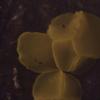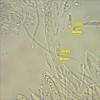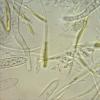
11-03-2017 21:28
 William Slosse
William Slosse
I always find it hard to distinguish citrina from

11-03-2017 00:03
 Viktorie Halasu
Viktorie Halasu
Hello forum, I'm looking for the description of H

10-03-2017 17:15
Jac GelderblomChers amisSur bois d'Acer j'ai trouvé une petite

10-03-2017 22:56
 Bernard CLESSE
Bernard CLESSE
Bonsoir à tous,Cet après-midi j'ai récolté sur

09-03-2017 21:04
 Amadej Trnkoczy
Amadej Trnkoczy
Hi,I would appreciate very much confirmation or co

05-03-2017 09:56
 Fedorenko Vassiliy
Fedorenko Vassiliy
Hello to everyone!Is that Helvella confusa?Fungi g

11-03-2017 00:27
Queridos amigos,Estamos ya listos para acogeros, d

10-03-2017 09:14
 Michel Hairaud
Michel Hairaud
Dear friends, We are now totally ready to welcome

09-03-2017 20:44
Lepista ZacariasHi everyone,This specimen was collected in the beg

10-03-2017 20:07
HiThese small, scattered, erumpent, semi-inmersed
Bisporella sulfurina?
William Slosse,
11-03-2017 21:28
 I always find it hard to distinguish citrina from sulfurina.
I always find it hard to distinguish citrina from sulfurina.Am I right that this one is sulfurina?
° Matured spores with mostly 4 oildrops and one septated / 10.54x2.98mu
° asci with no croziers
° growing in clusters
Thx in advance,
William
Hans-Otto Baral,
11-03-2017 21:42

Re : Bisporella sulfurina?
It is not easy to confuse these two species! What you show is clearly B. sulfurina (or now Calycina claroflava). When you apply Lugol you will not see an amyloid apical ring whereas B. citrina (Calycina citrina) reacts blue or dirty red at higher concentration.





